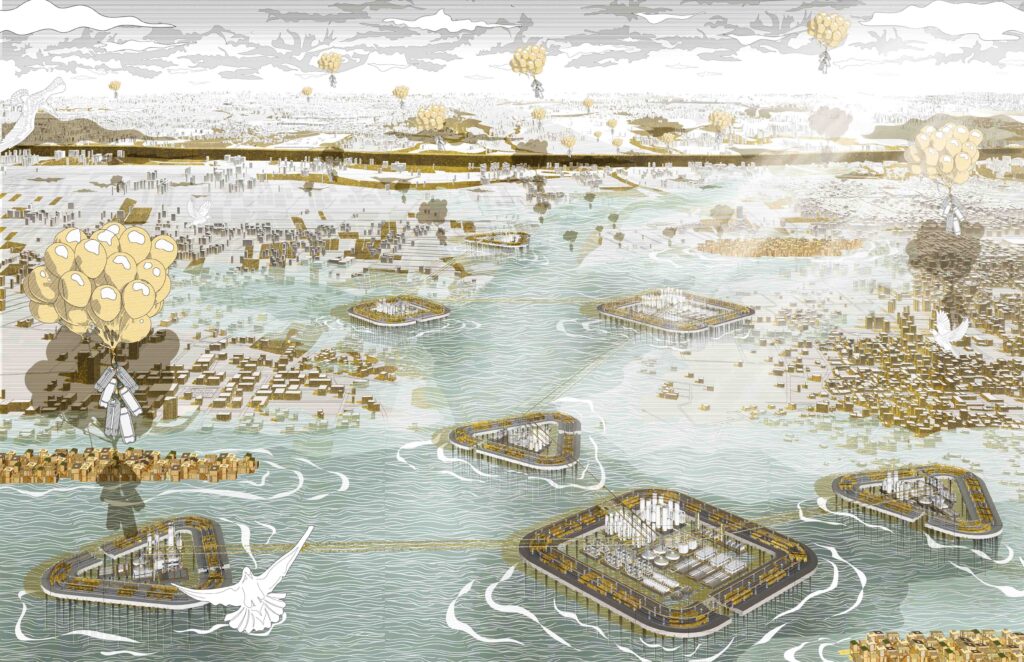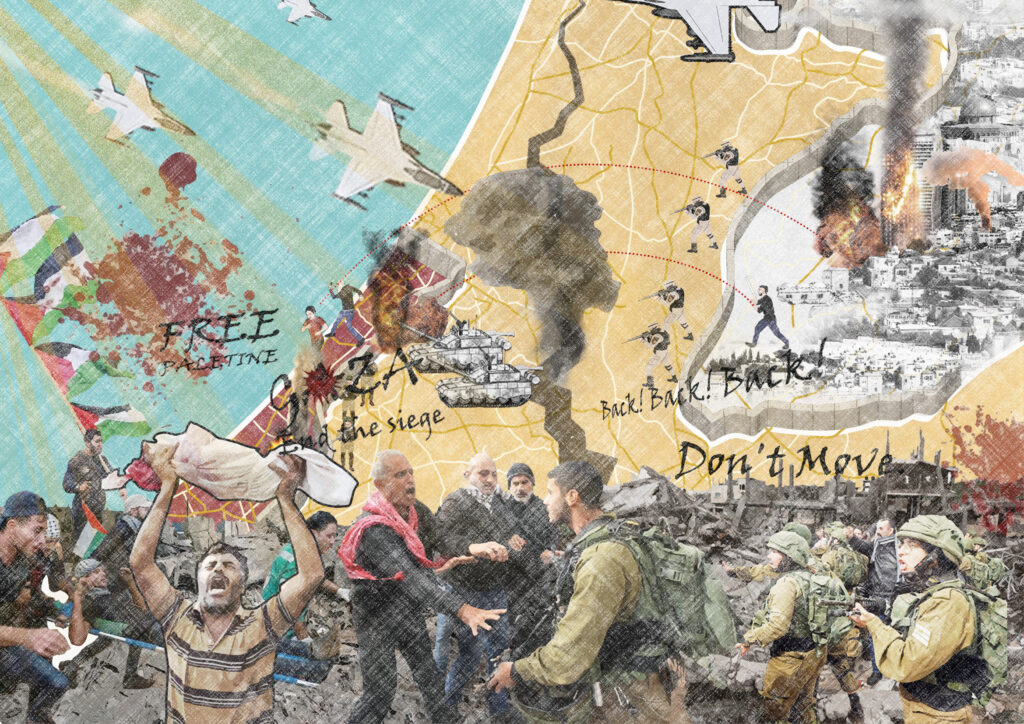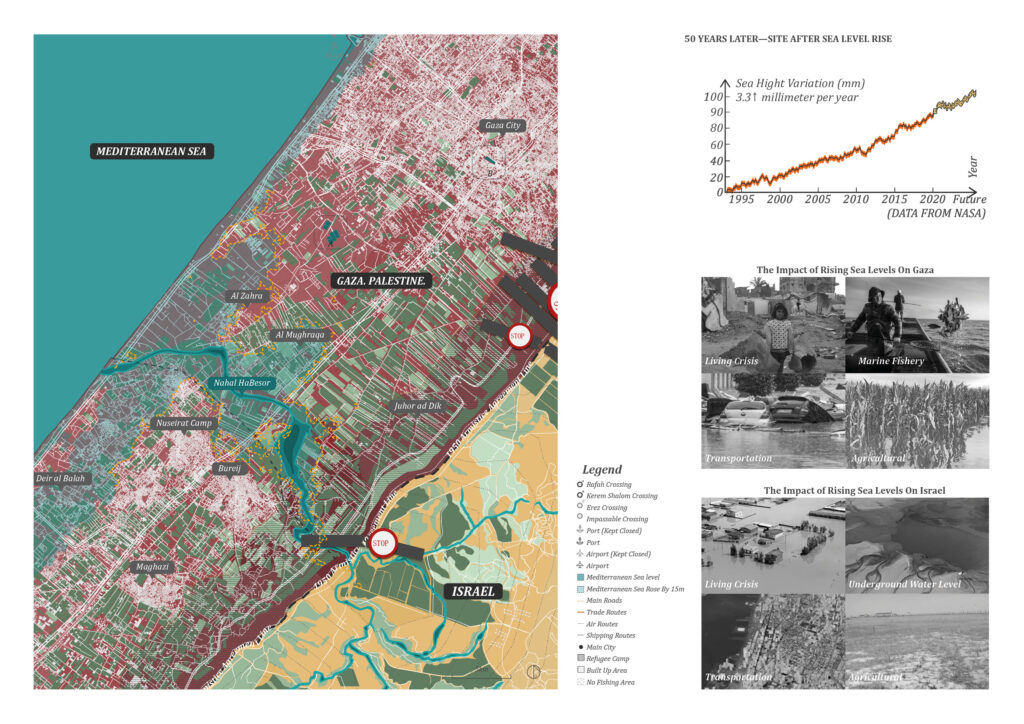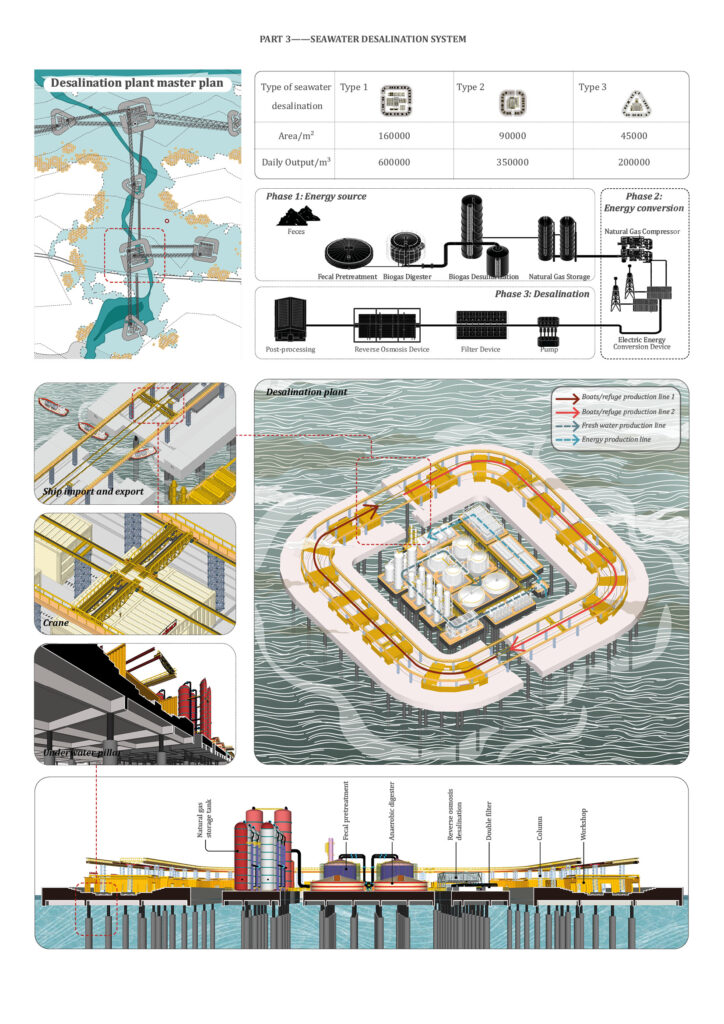Your cart is currently empty!
Gaza Peace Factory

Project description
Gustav Klimt’s fresco Beethoven Frieze expresses the story of weak human beings who, with the help of knights, jointly fight against the evil forces in prison and move towards the “ideal country.”
Since the founding of Israel in 1948, Palestine and Israel have been in confrontation for more than 70 years. They live in a “hell” world built up by war and gunpowder. Perhaps a “peace” factory can become their “knight” and lead them to “utopia”.
Although this story takes place in a dream, it expresses a desire for peace.

The project extracts scenes and elements from the story of Gustav Klimt’s murals. Under the leadership of the knight, people together defeat the power of evil and move towards the “ideal country”, and design corresponding functional spaces accordingly.


Israeli-Palestinian conflict has caused heavy losses to Israel and Gaza. Although the two sides have different industries and commodities, there is complementarity and connection between them, which will be the key to future cooperation.

The “Peace Factory” of the project is located in Deir AL-Belleh Province in the Gaza Strip 50 years later. Gaza and Israel occupy the heart of the Mediterranean Sea, where sea levels in the Mediterranean are rising rapidly year by year, eroding land in Gaza and Israel.

The core strategy is to connect industries (agriculture, livestock, fisheries, etc.) between Israel and Gaza (Palestine) using freshwater resources, aiming to establish a sustainable water management system that promotes mutual benefit.

The overall layout of the peace factory is divided into 2 stages. People use fresh water for farming, agriculture and establish export routes for maritime trade.




The storyboard depicts the 2 nations working together towards a peaceful utopian world, but it all happens in a dream.

Designer introduction
Yaqiong Song
Yaqiong Song is an architectural designer based in London with a passion for innovative design, sustainable solutions, and thoughtful spatial storytelling. Graduating with a Master’s degree from UCL, her work explores the intersection of technology, materiality, and social impact, often delving into parametric design, adaptive reuse, and urban interventions.
Yapin Xu
Yapin Xu is an architectural designer based in China, whose work is defined by an integration of critical thinking and narrative-driven design. Having completed her Part 2 at University of Edinburgh, she emerged with a profound understanding of architectural theory, honed through the program’s rigorous curriculum that emphasizes in-depth research, design innovation, and critical discourse. Her critical mindset drives her to challenge programmatic assumptions, advocating for spaces that not only meet client needs but also address broader urban or societal questions.
